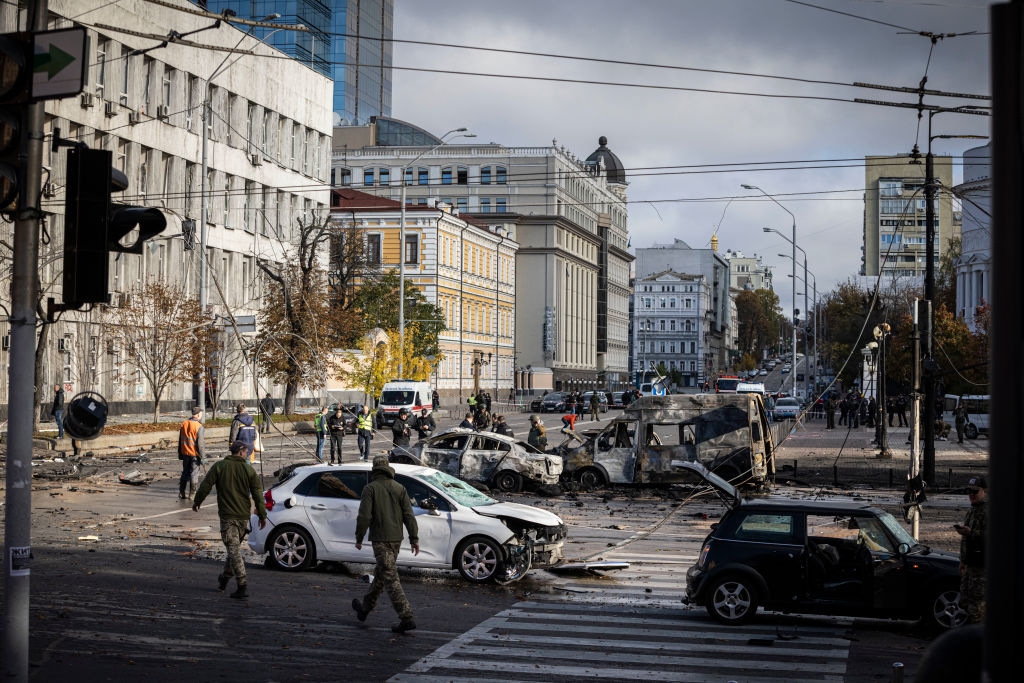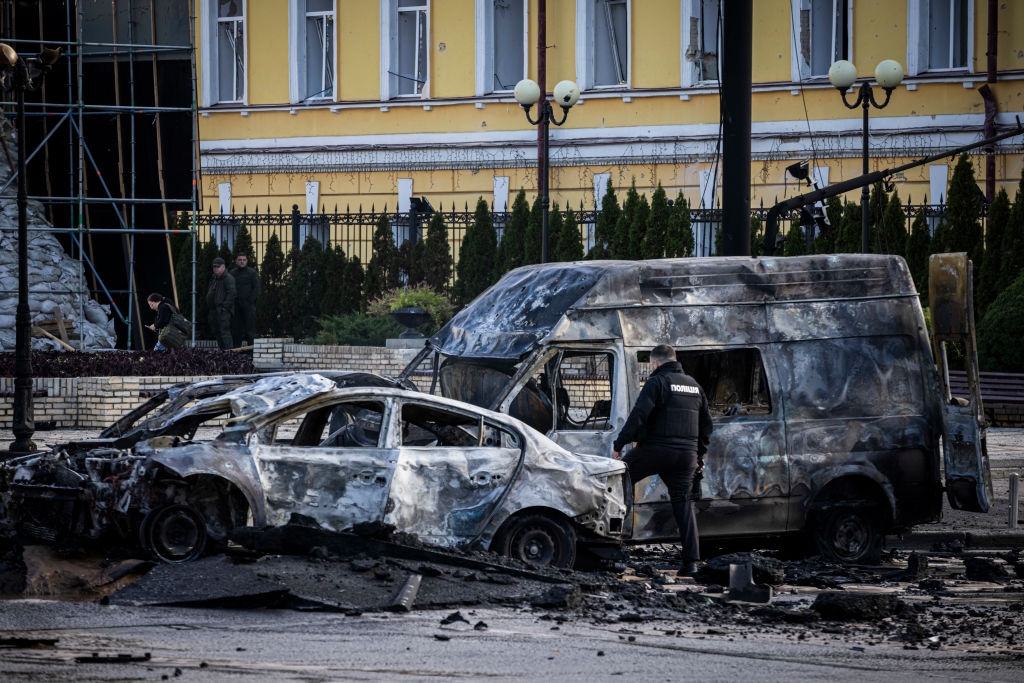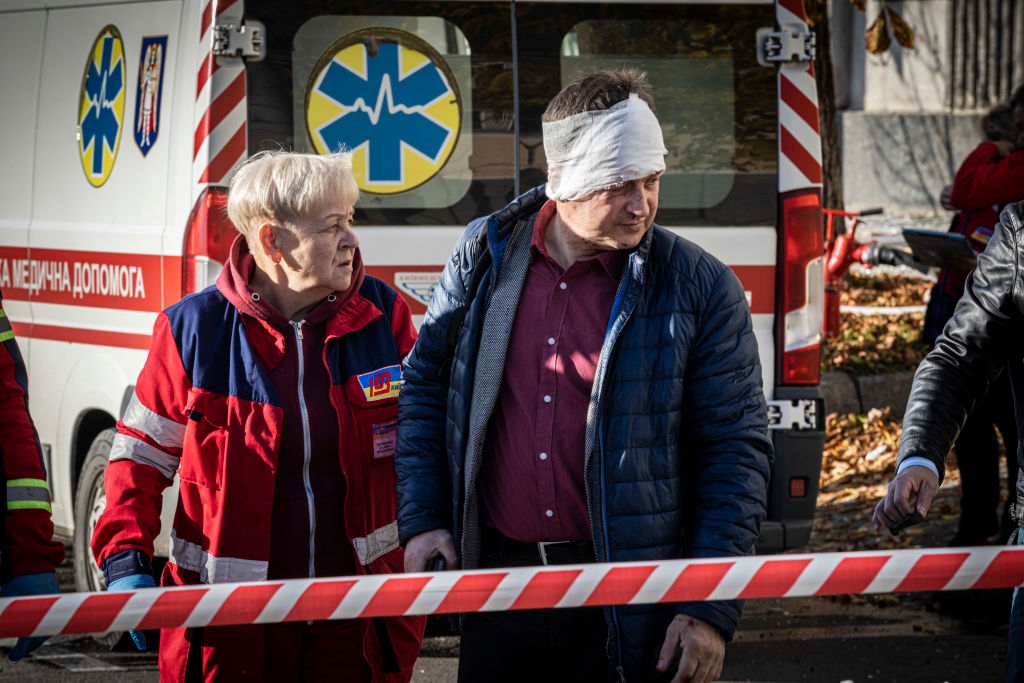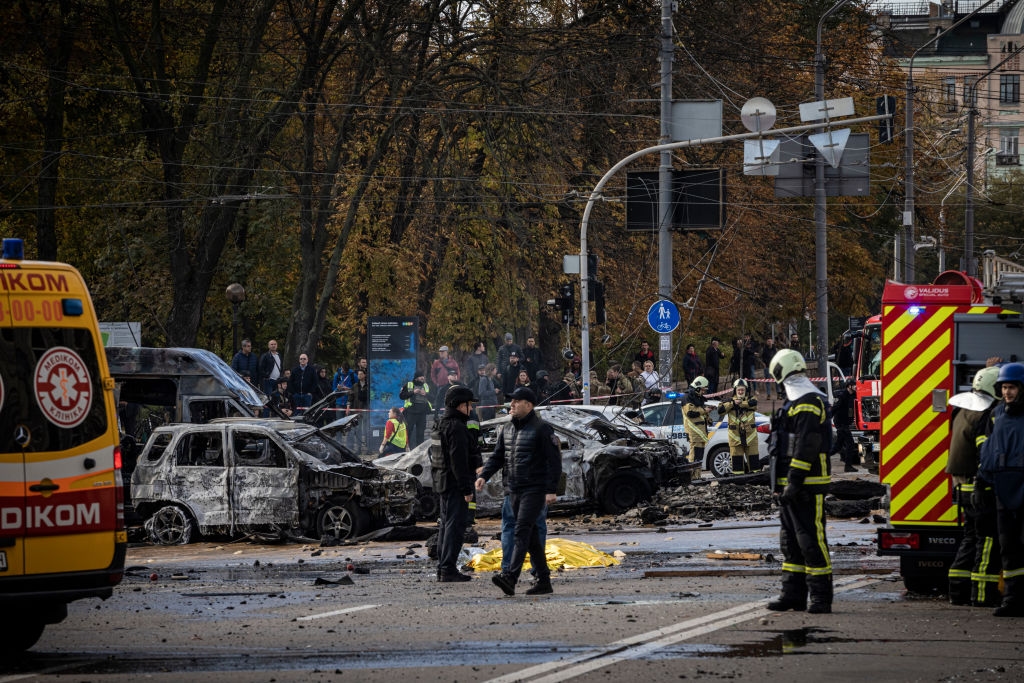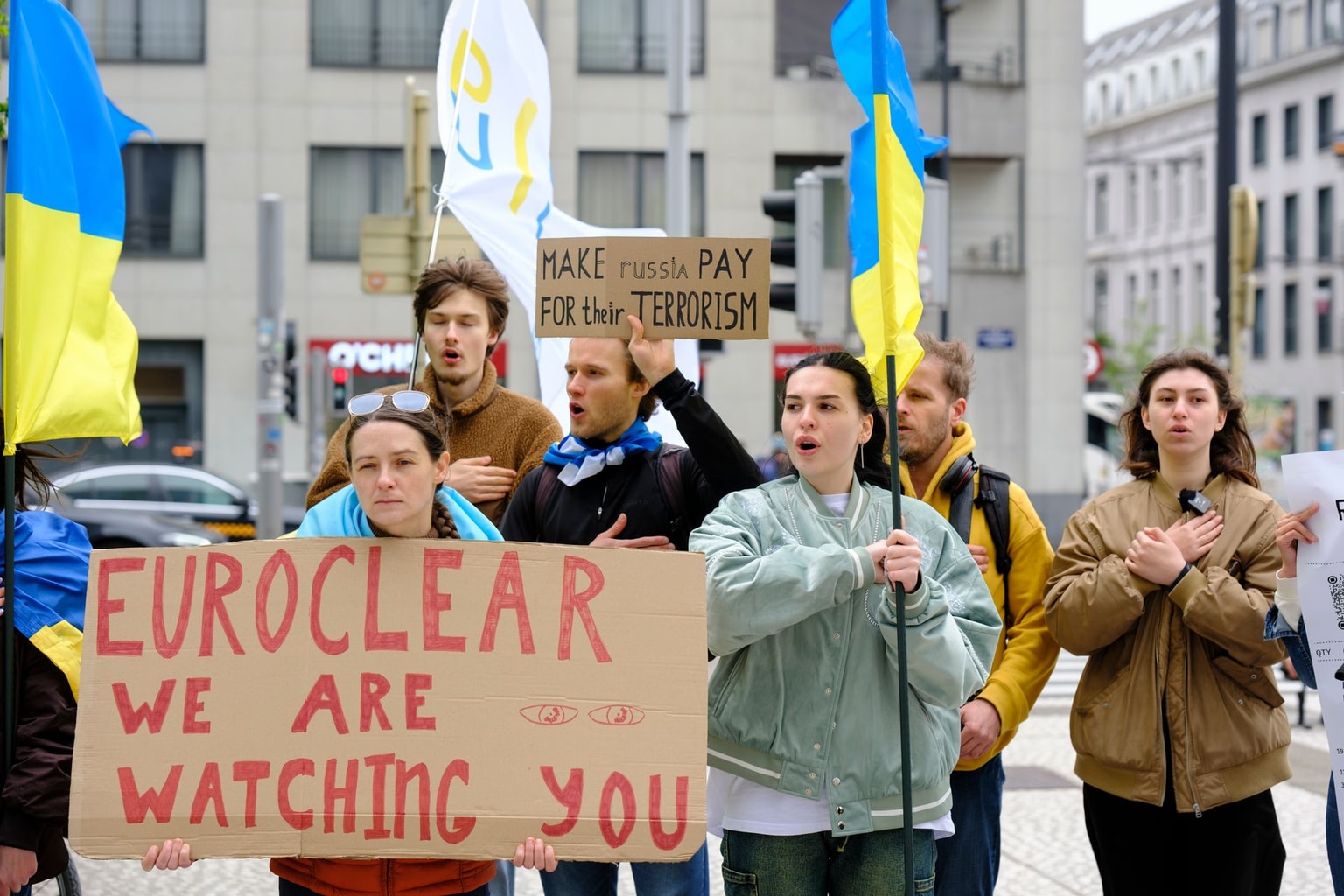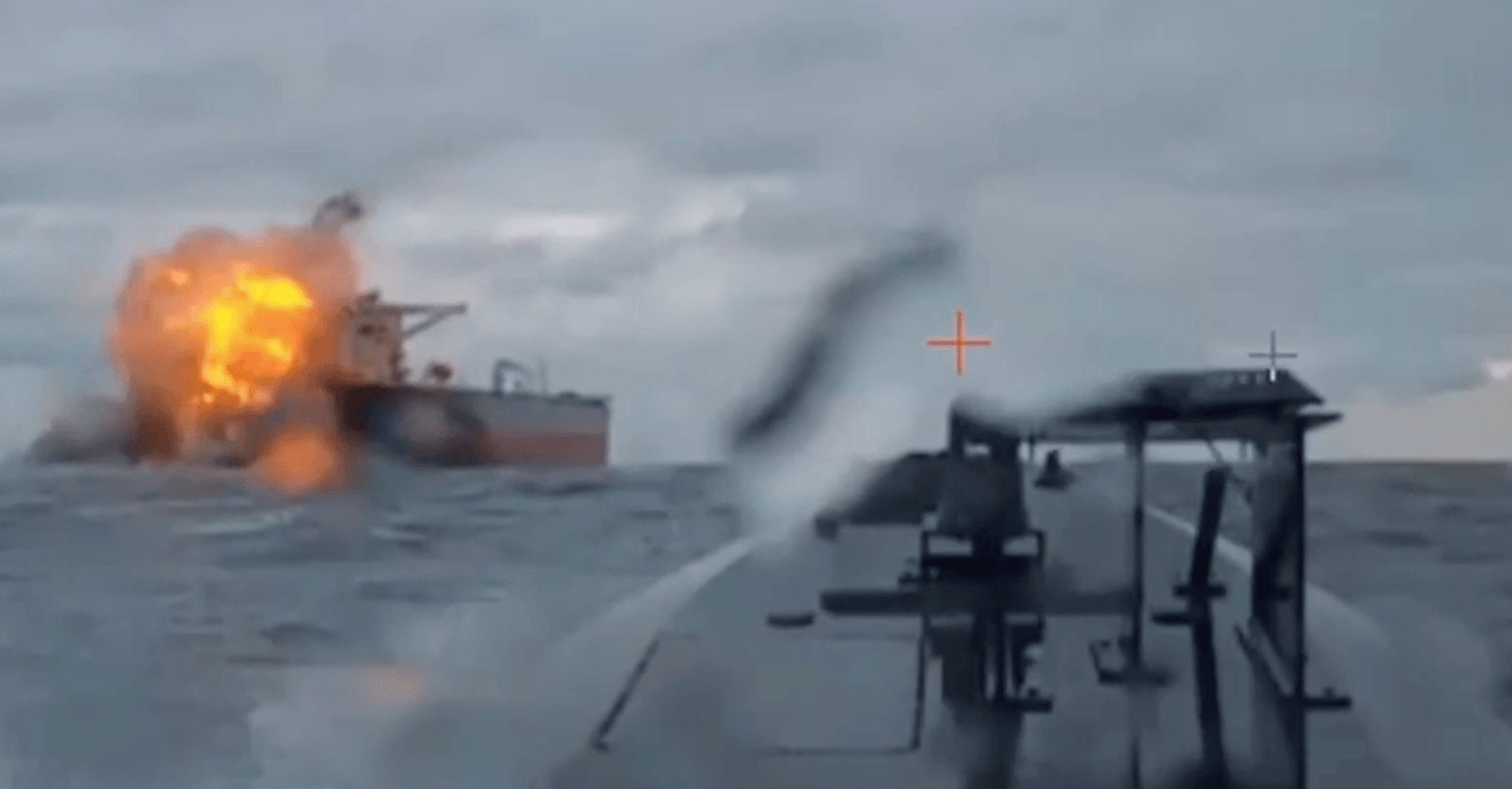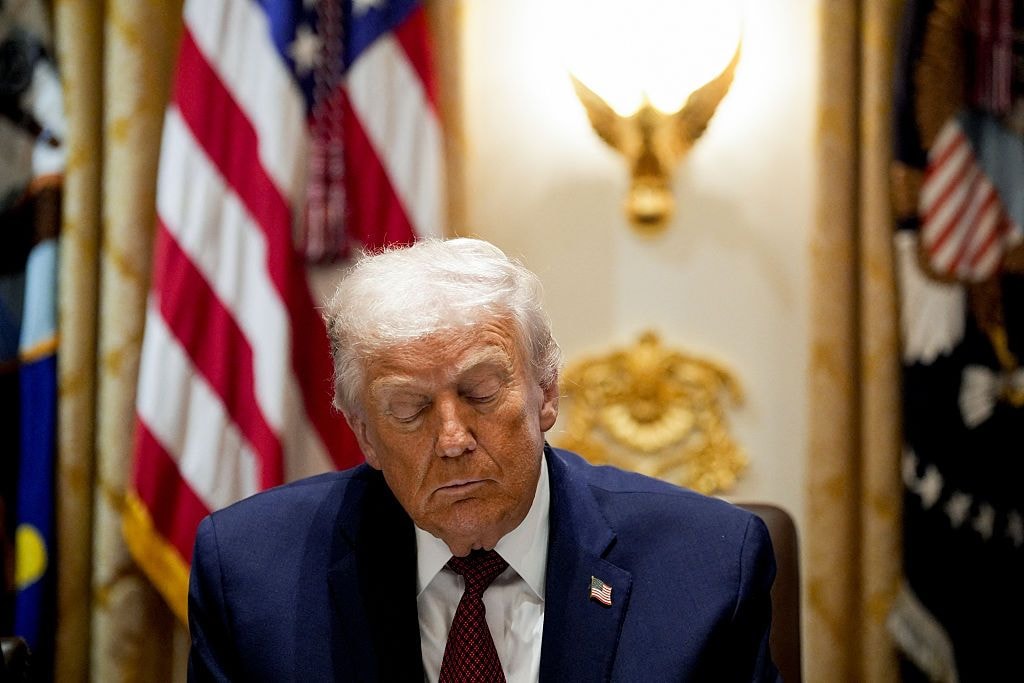Ukraine racked by intense bombardment of cities, energy infrastructure and central Kyiv among targets
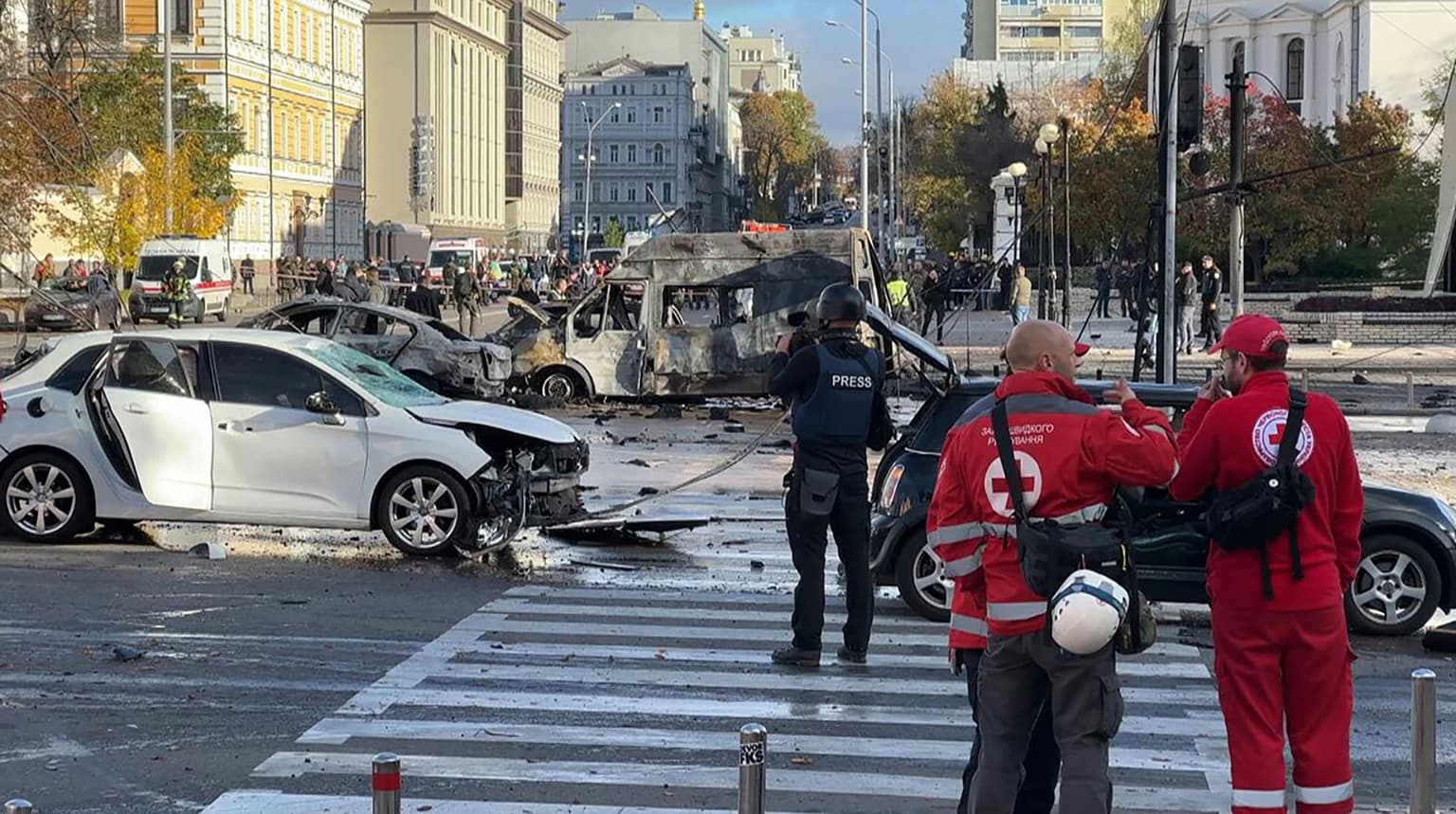
On the morning of Oct. 10, Russian missiles and kamikaze drones struck central Kyiv and other major cities in Ukraine in the largest-scale coordinated missile attack against Ukraine since the full-scale invasion began on Feb. 24.
Dozens of other explosions were reported across Ukraine, including in Kharkiv, Kryvyi Rih, Lviv, Dnipro, Ternopil, Kremenchuk, Khmelnytskyi, and Zhytomyr.
According to Valerii Zaluzhnyi, Commander-in-Chief of the Ukrainian Armed Forces, as of 11 a.m. on Oct. 10, 75 missiles were fired by Russia at Ukraine, of which only 41 were shot down by air defense.
The attacks came as Russian dictator Vladimir Putin accused Ukraine and its security services on Oct. 9 of a "terrorist attack aimed at destroying Russia's critically important infrastructure" following an explosion on the Crimean Bridge on Oct. 8, which connects occupied Crimea with Russia via the Kerch Strait.
Starting around rush hour, over a dozen explosions were heard in Kyiv, many of which struck the very center of the nation’s capital. These attacks are the first missile strikes in Kyiv since June 26, which killed one person. Until now, central Kyiv had remained untouched by the war.
Early reports suggest that many of the attacks around Ukraine were aimed at critical infrastructure, in particular electricity grid facilities.
Zhytomyr Oblast Governor Vitaliy Bunechko reported that the region’s energy infrastructure had been targeted, and that the work of emergency repair services had already begun. Lviv Oblast Governor Maksym Kozytsky also reported that energy infrastructure was damaged in the oblast, with air defense only shooting down a portion of the 15 missiles fired at the region.
In a brief video address to Ukrainians, President Volodymyr Zelensky reported attacks on electricity infrastructure in Kyiv, Khmelnytskyi, Lviv, Dnipropetrovsk, Vinnytsia, Ivano-Frankivsk, Zaporizhzhia, Sumy, Kharkiv, Zhytormyr, Kirovohrad, and other oblasts.
In Odesa Oblast, three Russian missiles and five Iranian-made kamikaze drones were shot down by air defense, according to Odesa Governor Maksym Marchenko.
In Kyiv however, many of the areas hit were central streets and park areas, including just outside the main building of the Taras Shevchenko National University of Kyiv, and just underneath the recently-built glass pedestrian bridge near Independence Square (Maidan Nezalezhnosti).
As per the most recent information, eight people have been killed, and 24 wounded in the attacks on central Kyiv, Ukraine’s Interior Minister’s adviser Rostyslav Smirnov reported. Six cars caught fire, and more than 15 cars were damaged, Smirnov said. These figures are expected to rise as more information comes in from other areas hit.
Of all Ukrainian cities, Kyiv is understood to be the best protected by air defense systems. Local Telegram channels reported several missiles having been intercepted by air defense, however, more and more successful strikes were being recorded.
For many months since Russia’s invasion of Ukraine began to seriously falter, threats were consistently made by Putin, as well as Russian officials and propagandists, about hitting Kyiv with increasing intensity.
In particular, threats were made to conduct strikes against the “centers of decision-making” meaning key government buildings such as the Presidential Administration of Ukraine, Verkhovna Rada, and Security Service of Ukraine. However, the areas hit in central Kyiv were neither military nor administrative targets.

